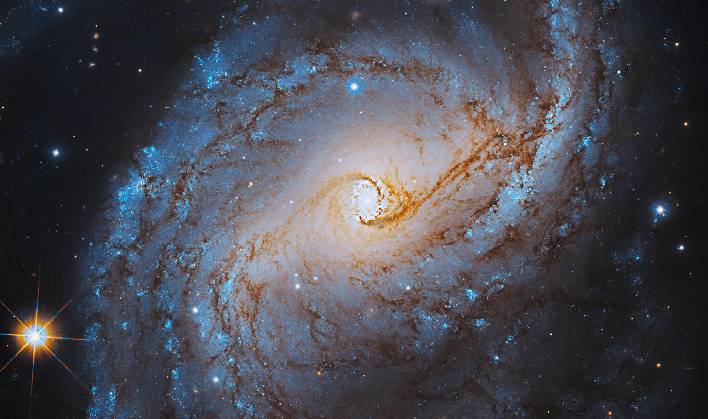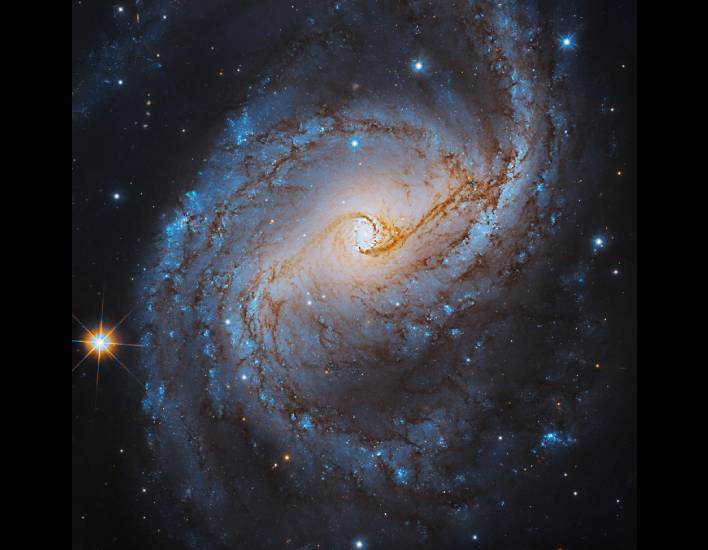Hubble Captures Jaw-Dropping Image Of A Blue Spiral Galaxy Over 800M Years Old

According to NASA, NGC 6951 is often classified as a Type II Seyfert galaxy, which is a type of active galaxy that emits immense amounts of infrared radiation and has slow-moving gaseous matter near its center. The entire galaxy spans about 75,000 light-years across, and is visible from the northern hemisphere. Scientists and astronomers believe the galaxy had its highest rate of star formation about 800 million years ago, then sat idle for the next 300 million years before beginning to give birth to new stars again.

NGC 6951 has a supermassive black hole at its center that is surrounded by a ring of stars, gas, and dust, and spans about 3,700 light-years across. There is a theory held by some scientists that hypothesize that interstellar gas flows through the dense, starry bar of the galaxy to the circumnuclear ring, which is said to supply new material for star formation.
Other stars in NGC 6951 are believed to have experienced "terrific stellar explosions" known as supernovas. In the past 25 years, astronomers have counted as many as six supernovas in the galaxy. Spiral lanes of dust can be seen in dark orange, which is said to connect the center of the galaxy to its outer regions, providing more material for future star formation.
The image of NGC 7951 used data from Hubble's Wide Field Camera 3 and Advanced Camera for Surveys. It is one of several images shared by NASA recently that were captured using Hubble.

